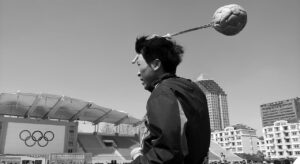That complex, contradictory, multifactorial and multifunctional phenomenon that we call “modern sport” has its origins at the beginning of the 27th century, and it was organized into familiar forms at the turn of the 19th-20th centuries.
Modern sport arises somewhat differently than ancient. Its origin is associated with the development of bourgeois urban culture and its origins lie not in the needs of physical improvement and not in traditional forms of holidays, but mainly in new opportunities for leisure entertainment. If the athletes of antiquity were patronized by the gods, and the athletes themselves approached the gods with their perfection, then the sport of the new time was born, rather, by boredom and excitement.
L. Kuhn in his book “The General History of Physical Culture and Sports” notes that horse racing played the most significant role in the emergence and development of sports in England. The term “training” itself came from the racing stables and originally expressed the preparation of horses for competitions. Horse races have always attracted a large number of spectators who made bets and made bets. Excitement, moreover, artificially heated, very often led to brawls, which also attracted the keen interest of the public and aroused passions. To settle skirmishes, certain rules were drawn up, which turned these skirmishes into an independent form of spectacular competitions.
At the turn of the XVIII – XIX centuries in England there were already several dozen boxing schools, and the poet Byron took lessons in one of them. Boxing, developed as an art of defense, gained popularity primarily as a spectacle.Boxing soon became one of the most popular sports, although it spread slowly in Europe. But he conquered the United States swiftly and mainly thanks to businessmen and managers who began to make money on this spectacle, so suitable for the spirit and style of the American freemen. Boxing has become the art of the street, the bar and the ring. These are the prerequisites and circumstances for the emergence of boxing in its current form.
So modern sport with its rules arose, alas, not on a humanistic basis, not as a realization of the beautiful-hearted ideals of the Enlightenment and utopianism, but on the basis of a commercial deal, a bet, a bet. The sports messages of the then England almost entirely consisted of publications about monetary successes, winnings, and rewards. Therefore, the rules of horse racing and hippodromes were so easily transferred to emerging sports. Here the purely commercial side of the institutionalization of modern sport clearly manifested itself, which since then has lived in it and has never left it.
One of the most important and decisive reasons for the rapid development of sports as part of the culture of modern society was the introduction of physical education into the school curriculum. The pioneer merit in this belongs to the rector of Rugby College T. Arnold (1755 – 1842). The essence of his reform of school education was that older and stronger teenagers were not mocking tyrants of the younger and weak, but their patrons and organizers.Arnold considered that this could be achieved through sports, based on the fact that the best in games and competitions, as a rule, are also leaders of youth groups, within which discipline and certain rules of honor are usually observed. Hence his pedagogical principle: through the game and sports – to education and study.
The experience turned out to be successful and for some time became a model for English schools of the 19th century, whose graduates not only firmly mastered the sports spirit and traditions, but also brought them into the mass consciousness, into the way of life. Soon reforms were carried out in the same direction in the schools of the USA, France and other countries.
As the popularity of the sport grows, so does its rapid spread among the broad democratic sections of the population. One after another, amateur sports associations arise – aristocratic (fencing, equestrianism, dog racing, cricket) and bourgeois (rowing, cycling, fencing, tourism), the charters of which emphasized that people engaged in physical labor, paid coaches or those who advocated for money.
In professional sports, with its rigid specialization, contradictions related to the forms of cultivation of sports in this period appeared much more sharply than in amateur sports.



